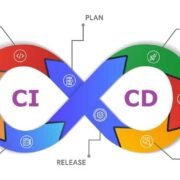Growth is an exciting milestone for any healthcare clinic, but it brings unique operational challenges. As patient volume increases, administrative tasks multiply, coordination becomes more complex, and maintaining quality care requires increasingly sophisticated systems. Without the right technology infrastructure, expanding practices often find themselves struggling with bottlenecks, inefficiencies, and staff burnout that can undermine the very success they’ve worked so hard to achieve.
Scalable technology offers a strategic solution to these growing pains. Rather than implementing systems that need to be replaced as you expand, scalable solutions adapt to your evolving needs, supporting everything from a single-location practice to a multi-site operation. This article explores four essential technology strategies that enable clinics to scale smoothly while maintaining—or even improving—the quality of patient care and operational efficiency.
Adopt Integrated Practice Management Software
As your clinic grows, managing appointments, billing, insurance claims, and patient records across an expanding team becomes exponentially more complex. Disparate systems that might have worked for a smaller operation quickly become untenable when you’re coordinating care for thousands of patients across multiple providers and locations. Practice management software provides a unified platform that centralizes these critical functions, creating a single source of truth for your entire operation.
The true value of integrated practice management software becomes apparent as you scale. When scheduling, billing, and clinical documentation exist within the same system, information flows seamlessly between departments without manual data entry or the risk of transcription errors. If a patient schedules a follow-up appointment, the system can automatically verify insurance eligibility, flag any outstanding balances, and alert clinical staff to relevant information from previous visits. As you add new providers or open additional locations, these users can be incorporated into the existing system with their appropriate permissions and workflows, rather than requiring entirely new infrastructure.
Modern practice management platforms also provide the analytics capabilities that growing clinics need to make informed decisions. You can track key performance indicators like patient volume trends, revenue cycle metrics, and provider productivity across your entire organization or drill down into specific locations or departments. This visibility allows you to identify opportunities for improvement, allocate resources more effectively, and spot potential issues before they become serious problems. The scalability of these systems means they can handle increased data volume and user complexity without degrading performance, ensuring your technology keeps pace with your growth.
Implement Cloud-Based Electronic Health Records
The transition from paper charts or server-based systems to cloud-based electronic health records (EHRs) represents a fundamental shift in how growing practices manage clinical information. Cloud-based EHRs store patient data on secure remote servers rather than on local hardware, which eliminates the need for expensive on-site servers, IT maintenance, and the spatial limitations of physical storage. For clinics planning to expand, this architecture offers enormous advantages in terms of flexibility, accessibility, and cost management.
Accessibility is perhaps the most compelling benefit for growing practices. With cloud-based EHRs, providers and staff can access patient information from any location with an internet connection, using computers, tablets, or smartphones. This becomes invaluable as you add satellite locations, offer telehealth services, or have providers who work across multiple sites. A physician can review a patient’s complete medical history before a scheduled visit, even if they’re working from a different location than where the patient was previously seen. This continuity of information enhances care quality and prevents the dangerous fragmentation that can occur as practices expand.
The scalability of cloud-based systems also translates to predictable costs and simplified growth. Rather than purchasing additional servers and licenses upfront when you expand, cloud-based EHRs typically operate on a subscription model where you pay for what you use. Adding new users, locations, or storage capacity is as simple as adjusting your subscription, and the vendor handles all updates, security patches, and infrastructure maintenance. This allows growing practices to focus their resources on patient care and strategic initiatives rather than IT management, while ensuring their technology infrastructure remains current and secure without constant capital investment.
Deploy Telehealth and Remote Monitoring Capabilities
Expanding your clinic’s reach doesn’t necessarily mean opening additional physical locations. Telehealth technology enables practices to serve more patients across broader geographic areas without the overhead costs associated with brick-and-mortar expansion. For growing clinics, telehealth represents a scalable way to increase capacity, improve access for existing patients, and attract new patient populations who value the convenience of virtual care.
The implementation of telehealth capabilities extends beyond simple video consultations. Comprehensive telehealth platforms integrate with your existing EHR and practice management systems, allowing virtual visits to be scheduled, documented, and billed through the same workflows as in-person appointments. Patients can complete pre-visit questionnaires digitally, providers can share educational materials or treatment plans during the visit, and prescriptions can be sent electronically to the patient’s preferred pharmacy. This seamless integration ensures that virtual care maintains the same quality and documentation standards as traditional visits.
Remote patient monitoring (RPM) takes this concept further by allowing clinics to track patient health data between visits. Patients with chronic conditions like diabetes, hypertension, or heart disease can use connected devices to automatically transmit measurements like blood glucose, blood pressure, or weight to their care team. Providers can monitor this data through dashboards that flag concerning trends, enabling proactive intervention before a patient’s condition deteriorates. For growing practices, RPM creates a scalable model for managing complex patient populations more effectively without proportionally increasing the need for office visits, thereby expanding your capacity to serve more patients with existing resources.
Automate Administrative Workflows and Patient Communication
As patient volume grows, the administrative burden on your staff increases dramatically. Phone calls, appointment reminders, insurance verification, billing inquiries, and general patient questions can quickly overwhelm even a well-staffed front desk. Automation technology addresses this challenge by handling routine tasks that don’t require human judgment, freeing your team to focus on interactions that genuinely benefit from personal attention.
Patient communication platforms can automate appointment reminders through text messages, emails, or phone calls, significantly reducing no-show rates without requiring staff to make individual reminder calls. These systems can also send automated messages for other routine communications: pre-visit instructions, post-visit follow-up, patient satisfaction surveys, and health maintenance reminders for preventive care like annual checkups or cancer screenings. The scalability of these systems means that whether you’re sending messages to 100 patients or 10,000, the process requires the same minimal staff involvement.
Workflow automation extends to back-office operations as well. Insurance eligibility verification, prior authorization requests, and claims submission can be partially or fully automated, reducing the time staff spend on these time-consuming processes. Patient portals with self-service capabilities allow patients to request appointments, complete forms, view test results, request prescription refills, and pay bills online without staff intervention. These automation investments pay dividends as you grow—the same systems that support a practice with 5,000 patients can typically scale to support 15,000 or more with minimal additional configuration or staffing increases, creating operational leverage that makes growth more sustainable and profitable.
The technology choices you make today will shape your practice’s ability to grow successfully tomorrow. Rather than viewing technology as a cost center, forward-thinking clinic leaders recognize these investments as strategic enablers of sustainable growth. By implementing scalable solutions in practice management, electronic health records, telehealth, and administrative automation, you create an infrastructure that expands seamlessly with your practice. Start by assessing your current technology stack and identifying the areas where limitations are already appearing or are likely to emerge as you grow. Prioritize solutions that integrate well with each other and offer clear pathways for scaling, ensuring your technology becomes a competitive advantage rather than a constraint as you build the successful, growing practice you envision.













